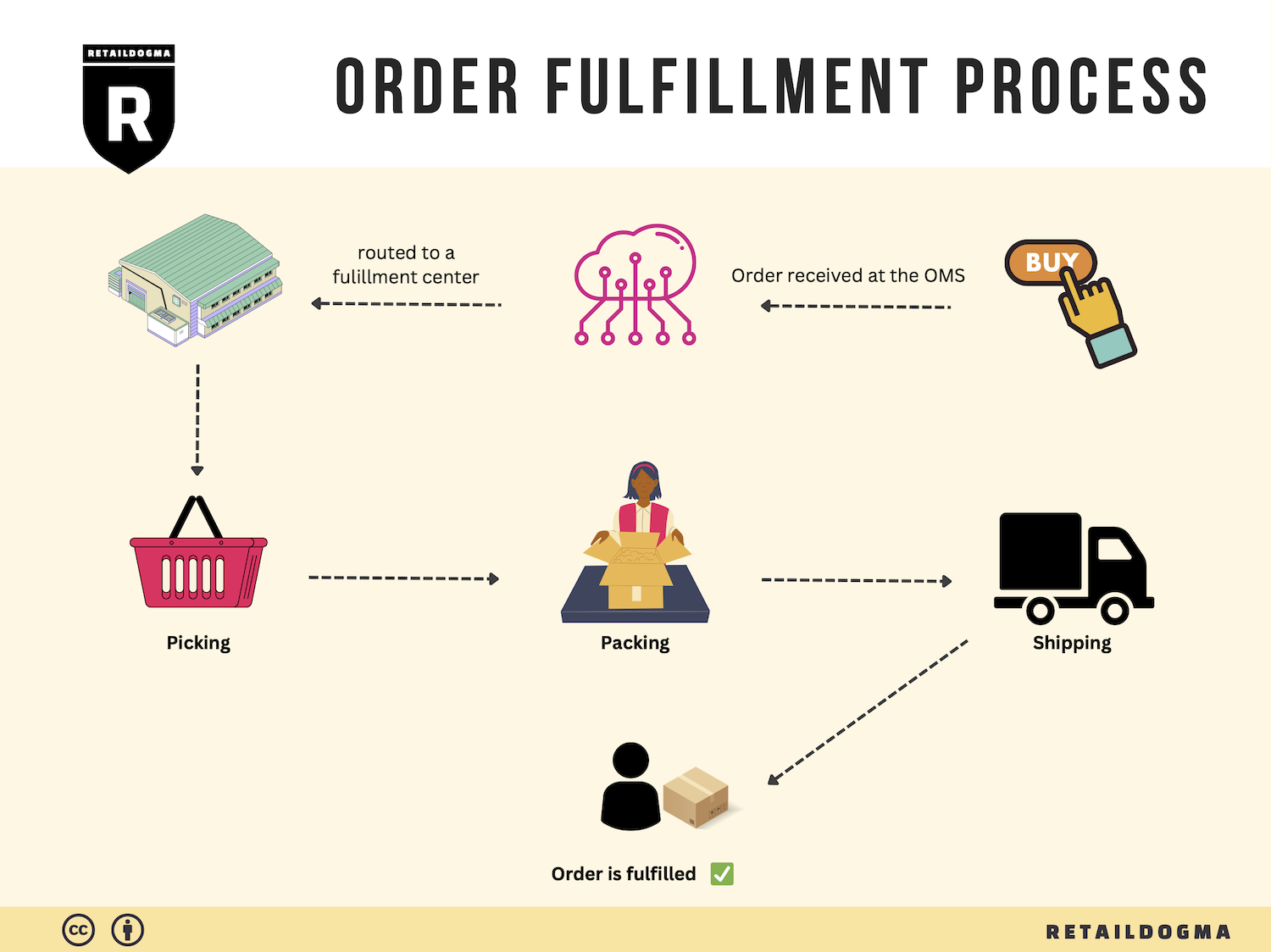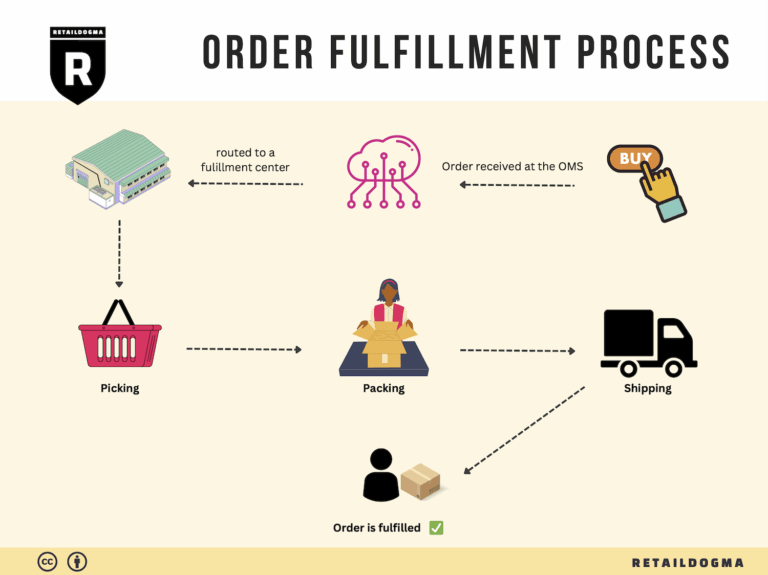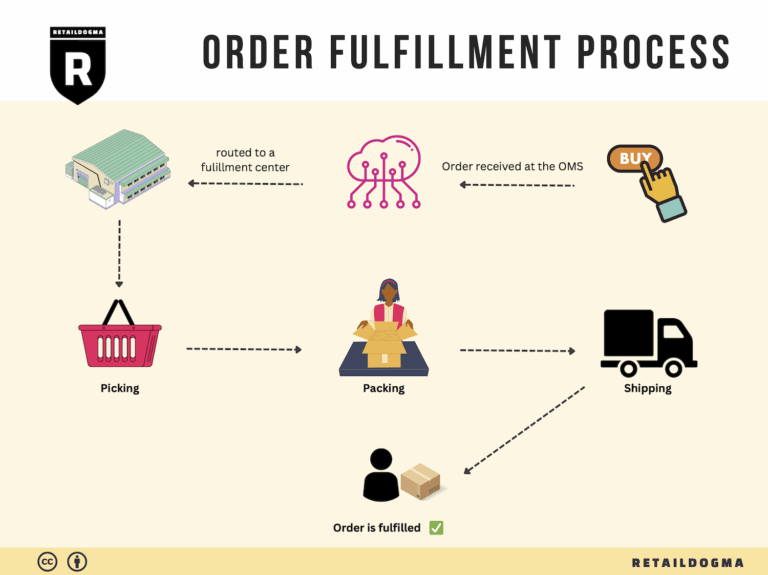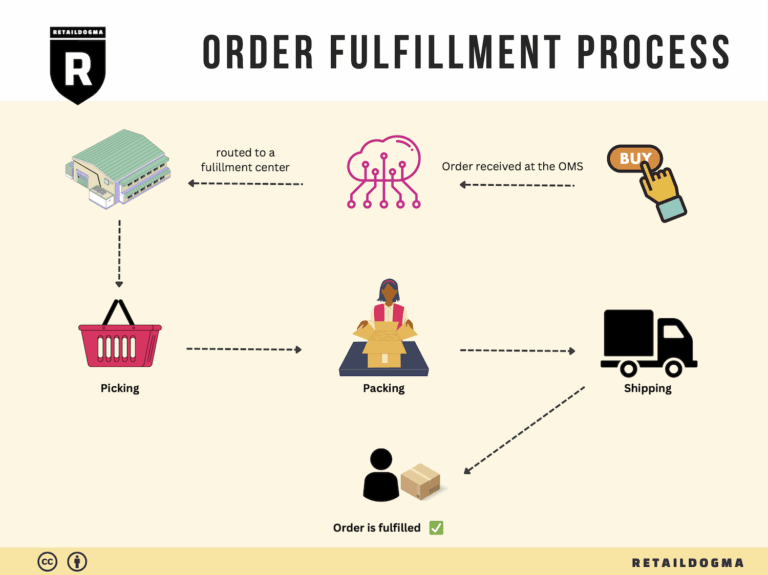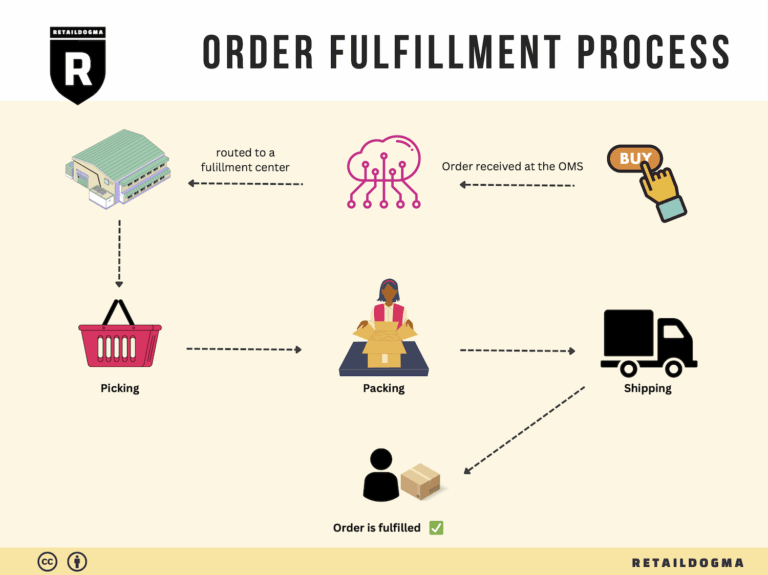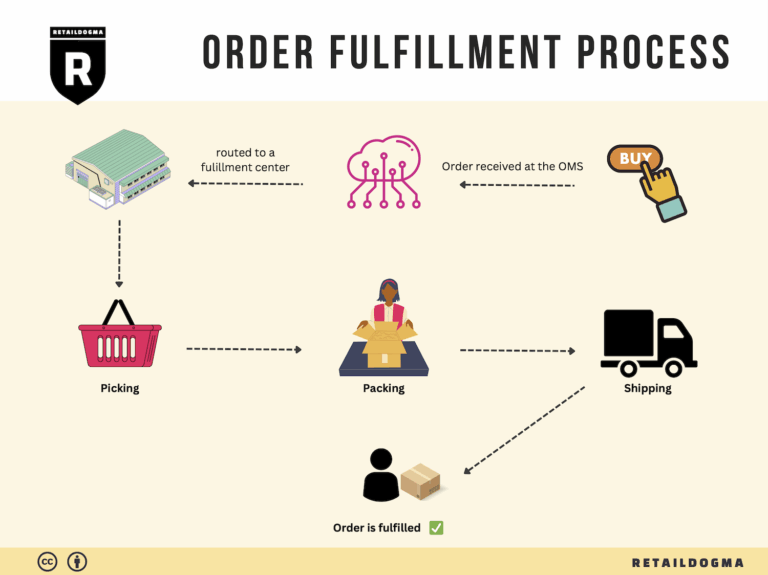Ecommerce Fulfillment Services: The Ultimate Guide (2025)
What is E-commerce Fulfillment? An Introduction for Growing Businesses
Understanding the Challenges of E-commerce Fulfillment
As an e-commerce business owner, you may find yourself overwhelmed with the logistics of packing and shipping orders. The excitement of growing your brand can quickly turn into stress when faced with the complexities of fulfillment. This process—getting your products into the hands of customers—can become a significant bottleneck if not managed effectively.
Defining E-commerce Fulfillment
At its core, e-commerce fulfillment is the complete process of receiving, processing, and delivering orders to customers. It encompasses everything from inventory management to order processing, packaging, and shipping. For growing businesses, mastering this aspect of operations is crucial, as it directly impacts customer satisfaction and retention.
What This Guide Will Cover
In this comprehensive guide, we will explore various fulfillment models that cater to the unique needs of e-commerce businesses. We will discuss:
-
Fulfillment Models: Understand the differences between Third-Party Logistics (3PL), Fulfilled by Amazon (FBA), and in-house fulfillment. Each model comes with its own set of advantages and challenges, and knowing which one suits your business is essential for scaling effectively.
-
Core Fulfillment Services: We will delve into the essential services that a fulfillment partner should offer, including inventory management, order processing, shipping options, and returns handling.
-
Choosing the Right Partner: Selecting a fulfillment partner is a critical decision. This section will provide criteria to consider when evaluating potential partners, including technology capabilities, customer service, and scalability.
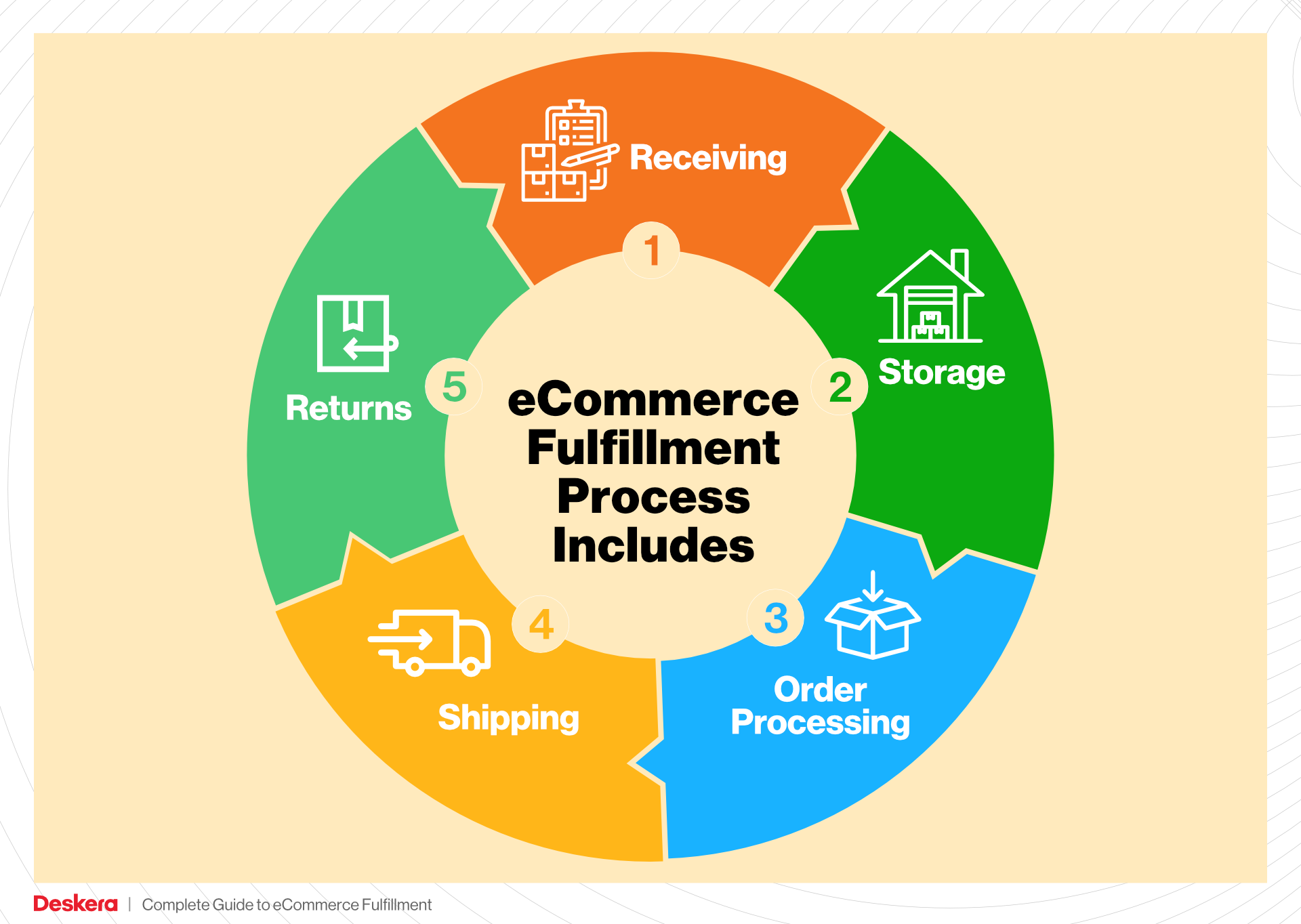
-
Pricing Considerations: Understanding the costs associated with different fulfillment options is vital for maintaining healthy profit margins. We will break down pricing models and highlight what to look for in terms of value versus cost.
Empowering Smart Decisions
The ultimate goal of this guide is to empower you to make informed decisions about your logistics strategy. By understanding the nuances of e-commerce fulfillment, you can streamline your operations, enhance customer experiences, and focus on what truly matters—growing your brand. Whether you’re contemplating a shift to a 3PL provider or fine-tuning your in-house fulfillment processes, this guide will serve as your roadmap to success in the competitive e-commerce landscape.
What You’ll Learn In This Guide
- What is E-commerce Fulfillment? An Introduction for Growing Businesses
- The Order Fulfillment Process: From ‘Buy’ Button to Customer’s Door
- Comparing Fulfillment Models: In-House vs. 3PL vs. Dropshipping
- A Deep Dive into Amazon FBA: Pros, Cons, and Who It’s For
- Core Services Offered by Fulfillment Centers
- How to Choose a Fulfillment Partner: A 6-Point Checklist
- Understanding Fulfillment Pricing: A Breakdown of Common Fees
- Frequently Asked Questions (FAQs) about Fulfillment
- Conclusion: Is Outsourcing Fulfillment the Right Move for Your Business?
- Important Disclaimer
The Order Fulfillment Process: From ‘Buy’ Button to Customer’s Door
1. Receiving Inventory
The first step in the order fulfillment process is receiving inventory. This involves the acceptance of products from suppliers or manufacturers into the fulfillment center. Upon arrival, items are checked against purchase orders to ensure accuracy in quantity and quality. This step is critical because it establishes the foundation for inventory management and ensures that you have the necessary stock to fulfill customer orders.
Key term: SKU (Stock Keeping Unit) – Each product is assigned a unique SKU, which aids in tracking inventory throughout the fulfillment process. Accurate receiving practices prevent stock discrepancies and help maintain a reliable inventory system.
2. Warehouse Storage
Once inventory is received, it is sorted and stored in the warehouse. Efficient warehouse storage involves organizing products in a manner that optimizes space and facilitates easy access. Products are often categorized by type, size, or demand frequency, allowing for quick retrieval. This step is vital because well-organized storage minimizes picking times and reduces the risk of errors during order fulfillment.
Key term: Bin Locations – Products are assigned specific bin locations within the warehouse. This systematic approach allows warehouse staff to quickly locate items, streamlining the picking process and improving overall operational efficiency.
3. Order Picking
Order picking is the process of retrieving items from their storage locations to fulfill customer orders. Once a customer places an order, the fulfillment center generates a pick list, which details the items and their corresponding locations. This step is crucial for ensuring that the right products are selected and prepared for shipment, directly impacting customer satisfaction.
Key term: Pick Lists – A pick list is a document or digital record that guides warehouse staff in selecting the correct items for each order. Utilizing efficient picking methods, such as batch picking or wave picking, can significantly enhance productivity and accuracy in order fulfillment.
4. Order Packing
After items are picked, they are moved to the packing station, where they are carefully packaged for shipment. This step involves ensuring that products are securely packed to prevent damage during transit while also providing a presentation that aligns with the brand’s identity. Effective packing practices can enhance the customer experience and reduce return rates due to damaged goods.
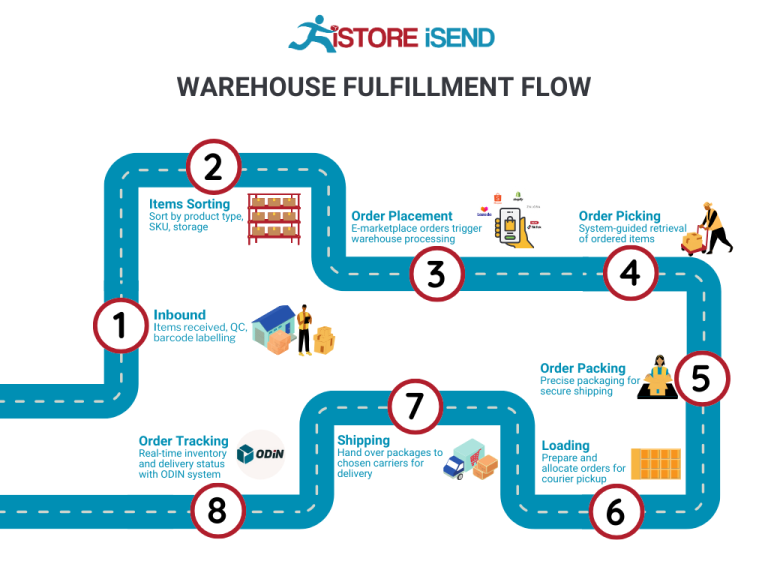
Key term: Branded Packaging – Using customized packing materials, such as boxes, tape, and inserts, helps reinforce the brand message and creates a memorable unboxing experience for customers. High-quality packaging not only protects the product but also fosters customer loyalty.
5. Shipping & Delivery
The final step in the order fulfillment process is shipping and delivery. Once packages are packed, they are labeled and scheduled for shipment. The fulfillment center collaborates with various carriers to ensure timely delivery to customers. This step is essential because it directly affects customer satisfaction and retention.
Key term: Carrier Management – This involves selecting and managing relationships with shipping carriers to optimize delivery speed and cost. By leveraging multiple carriers, businesses can enhance their shipping strategies, offering customers various delivery options that meet their needs.
By understanding and optimizing each of these steps, e-commerce businesses can create a streamlined order fulfillment process that not only improves operational efficiency but also elevates the overall customer experience. Implementing best practices in receiving, storage, picking, packing, and shipping will ultimately contribute to business growth and customer loyalty.
Comparing Fulfillment Models: In-House vs. 3PL vs. Dropshipping
Fulfillment Model Comparison
| Model | Who Handles Inventory | Best For (Business Stage) | Key Advantage | Key Disadvantage |
|---|---|---|---|---|
| In-House Fulfillment | The business itself | Startups and small businesses | Complete control over inventory and processes | High operational costs and complexity |
| Third-Party Logistics (3PL) | An external logistics provider | Scaling businesses | Scalability and expertise | Less control over operations |
| Dropshipping | Suppliers | New businesses and niche markets | Low upfront investment | Lower profit margins and branding challenges |
In-House Fulfillment
In-house fulfillment refers to a model where a business manages its own inventory, warehousing, and shipping processes. This model is often adopted by startups and small businesses that want to maintain complete control over their products and customer experience. One of the key advantages of in-house fulfillment is the ability to customize every aspect of the fulfillment process, from packaging to shipping methods. This control allows businesses to align their fulfillment strategies closely with their brand values and customer expectations. However, the operational complexity can become a significant disadvantage as the business scales. Managing logistics, inventory levels, and shipping can become cumbersome, leading to higher operational costs and potential inefficiencies. Additionally, the need for warehousing space and logistics expertise may require significant investments, making it less feasible for businesses aiming for rapid growth or those operating on tight margins.
Third-Party Logistics (3PL)
Third-party logistics (3PL) providers, such as Mochila, specialize in handling the logistics and fulfillment needs of e-commerce businesses. This model is particularly advantageous for businesses that are looking to scale. By outsourcing logistics to a 3PL, companies can leverage the provider’s expertise, technology, and infrastructure to streamline their fulfillment processes. Key benefits include access to advanced technology for inventory management and order tracking, as well as the ability to scale operations quickly without the overhead costs associated with maintaining warehouses and logistics personnel. However, partnering with a 3PL also means relinquishing some control over the fulfillment process. Businesses must carefully select a reliable partner and maintain clear communication to ensure that their brand promise is upheld. While 3PLs can offer significant operational efficiencies, businesses must also be prepared for potential challenges related to responsiveness and service level agreements.
Dropshipping
Dropshipping is a fulfillment model where the retailer does not keep the products it sells in stock. Instead, when a retailer sells a product, it purchases the item from a third party (usually a wholesaler or manufacturer) who then ships it directly to the customer. This model is particularly appealing for new businesses and those operating in niche markets due to its low upfront investment and minimal risk. Retailers can offer a wide range of products without the need for inventory, reducing storage costs and enabling them to pivot quickly based on market demand. However, dropshipping also presents challenges, including lower profit margins and difficulties in maintaining brand consistency. Retailers have limited control over shipping times, product quality, and customer service, which can lead to dissatisfaction and damage to their brand reputation. Moreover, reliance on suppliers for inventory management can lead to stockouts and missed sales opportunities if not managed properly.
In summary, each fulfillment model has its unique set of advantages and disadvantages, making them suitable for different business stages and objectives. Business owners must carefully evaluate their operational capabilities, growth ambitions, and customer service expectations to choose the most appropriate fulfillment strategy.
A Deep Dive into Amazon FBA: Pros, Cons, and Who It’s For
Understanding Fulfillment by Amazon (FBA)
Fulfillment by Amazon (FBA) is a service offered by Amazon that allows sellers to store their products in Amazon’s fulfillment centers. Amazon takes care of storage, packaging, and shipping products directly to customers. This enables sellers to leverage Amazon’s extensive logistics network and customer service capabilities. When customers order products fulfilled by Amazon, they benefit from Amazon’s renowned fast shipping and customer service, which can significantly enhance the buying experience.
How FBA Works
-
Inventory Storage: Sellers send their products to Amazon’s fulfillment centers. Amazon manages the storage of these products until they are sold.
-
Order Processing: When a customer places an order for a product listed as fulfilled by Amazon, the order is processed by Amazon. They pick, pack, and ship the item directly to the customer.
-
Customer Service: Amazon handles customer inquiries and returns for FBA products, allowing sellers to focus on other aspects of their business.
-
Multi-Channel Fulfillment: In addition to fulfilling orders from Amazon.com, sellers can also use FBA to fulfill orders from their own websites or other marketplaces, further streamlining operations.
Pros of Fulfillment by Amazon
-
Prime Eligibility: One of the most significant advantages of using FBA is that products become eligible for Amazon Prime. This means that sellers can attract more customers who are looking for the fast shipping and exclusive benefits that come with Prime membership.
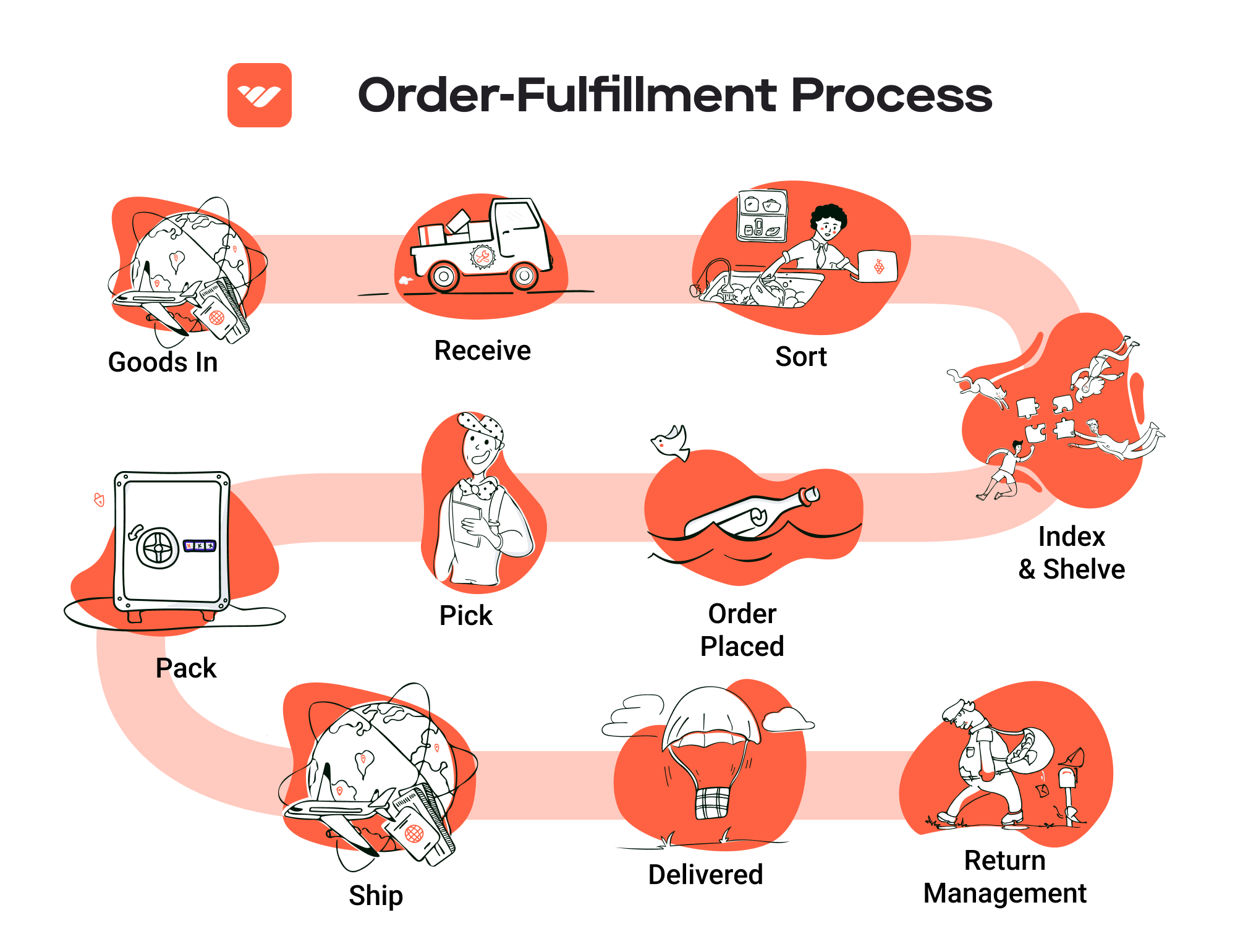
-
Customer Trust: Amazon is synonymous with trust in e-commerce. By using FBA, sellers can capitalize on Amazon’s reputation for reliability and customer service, which can lead to increased sales and customer loyalty.
-
Multi-Channel Fulfillment: FBA isn’t limited to Amazon sales alone. Sellers can use FBA to fulfill orders from their own websites or other online marketplaces, providing a seamless logistics solution across different sales channels.
-
Scalability: FBA allows sellers to scale their businesses without the need to invest in warehousing, staff, or logistics infrastructure. As sales increase, sellers can send more inventory to Amazon and let them handle the fulfillment.
-
Time-Saving: By outsourcing fulfillment to Amazon, sellers can save considerable time. They can focus on marketing, product development, and other strategic aspects of their business instead of the day-to-day operations of order fulfillment.
Cons of Fulfillment by Amazon
-
High Fees: While FBA provides numerous benefits, it comes at a cost. Sellers must pay various fees, including storage fees for inventory held in Amazon’s warehouses and fulfillment fees for each item sold. These costs can add up, particularly for low-margin products.
-
Strict Inventory Rules: Amazon has stringent guidelines regarding inventory levels and product condition. Sellers must ensure that they comply with these rules to avoid penalties, which can include additional fees or even account suspension.
-
Commingling Risks: When sellers use FBA, their inventory may be commingled with inventory from other sellers. This means that if a customer returns a defective product, it can impact the seller’s ratings and customer trust, even if the defect was not their fault.
-
Limited Control: Sellers relinquish a certain degree of control over their inventory and fulfillment processes. For instance, they cannot directly manage the packing and shipping of their products, which can lead to issues if products are mishandled.
-
Potential for Stockouts: Sellers must maintain adequate inventory levels to meet demand. If they run out of stock, they can lose visibility in search results and potentially miss out on sales. Additionally, replenishing inventory can take time, impacting sales continuity.
Who is FBA Best For?
Fulfillment by Amazon is best suited for sellers who are looking to scale their operations and can afford the associated costs. It is particularly advantageous for:
-
Small to Medium-Sized Businesses: Companies that are just starting or those that have reached a steady sales volume can benefit from FBA’s infrastructure without the overhead of managing logistics themselves.
-
Brands with High Demand Products: Sellers with products that have consistent demand can take full advantage of FBA’s fast shipping and customer service, leading to increased sales and customer satisfaction.
-
E-commerce Entrepreneurs: Those looking to diversify their sales channels and reach a broader audience through Amazon while maintaining the option to sell through their own platforms can effectively utilize FBA.
-
Time-Constrained Sellers: Entrepreneurs who want to focus on product development and marketing rather than fulfillment logistics will find FBA a valuable resource.
In conclusion, FBA provides a powerful tool for e-commerce sellers to enhance their operations and customer experience. While it comes with its own set of challenges, understanding the pros and cons can help sellers make informed decisions about whether FBA aligns with their business goals.
Core Services Offered by Fulfillment Centers
Inventory Management & Warehousing
Effective inventory management is the backbone of a successful e-commerce operation. Fulfillment centers provide businesses with the capability to store their products in strategically located warehouses, ensuring optimal accessibility to major markets. This service encompasses tracking inventory levels, managing stock replenishment, and ensuring that products are stored under the right conditions.
The primary benefit of robust inventory management is enhanced visibility and control over stock levels. With real-time tracking systems, businesses can avoid the pitfalls of overstocking or stockouts, both of which can be detrimental to customer satisfaction and cash flow. Fulfillment centers often employ advanced software that integrates with e-commerce platforms, allowing business owners to monitor inventory levels effortlessly. This integration not only streamlines operations but also provides valuable data insights, enabling better forecasting and demand planning.
Additionally, by outsourcing warehousing to a fulfillment center, businesses can reduce overhead costs associated with maintaining their own storage facilities. This allows e-commerce owners to allocate resources more effectively, focusing on marketing and product development rather than logistical challenges.
Pick and Pack Services
Pick and pack services are crucial in the order fulfillment process, as they directly influence the speed and accuracy with which orders are processed and delivered. This service involves selecting the correct items from inventory (picking) and then packaging them appropriately for shipping (packing).
The benefits of efficient pick and pack operations are manifold. First, they significantly reduce the time it takes to fulfill orders. Fulfillment centers utilize organized layouts and advanced picking technologies to ensure that items are retrieved quickly and accurately. This speed is essential for maintaining high customer satisfaction levels, especially in an era where consumers expect rapid delivery.
Moreover, fulfillment centers are adept at customizing packaging to reflect a brand’s identity. Whether it’s branded boxes, packing slips, or promotional inserts, these personalized touches can enhance the customer experience and foster brand loyalty. This capability is particularly valuable for e-commerce businesses looking to differentiate themselves in a crowded market.
Kitting and Assembly
Kitting and assembly services involve the grouping of individual items into ready-to-ship sets or the assembly of products that require multiple components. This service can be particularly beneficial for e-commerce businesses that offer complex products or promotional bundles.
The advantage of kitting is that it simplifies the fulfillment process for businesses. Instead of managing numerous individual SKUs, companies can streamline their inventory by selling bundled products. This not only optimizes storage space but also simplifies the picking process, reducing the chances of errors during order fulfillment.
Furthermore, kitting can enhance the appeal of products. Bundled offerings often present better value to customers, encouraging larger purchases and increasing average order value. For seasonal promotions or special events, kitting allows businesses to create unique product offerings that can drive sales and attract new customers.
Returns Management (Reverse Logistics)
Returns management, or reverse logistics, is an essential service that addresses the complexities associated with product returns. In the e-commerce landscape, where return rates can be significantly higher than in brick-and-mortar stores, an efficient returns process is crucial for maintaining customer satisfaction and loyalty.
Fulfillment centers streamline returns management by providing businesses with the infrastructure to handle returned items effectively. This includes inspecting returned products, restocking items, and managing refunds or exchanges. The benefit here is twofold: it minimizes the operational burden on e-commerce businesses and enhances the customer experience by providing a hassle-free return process.
A well-managed returns process can also provide valuable insights into customer behavior and product performance. By analyzing return data, businesses can identify trends, such as common reasons for returns, which can inform product development and marketing strategies. Ultimately, an efficient returns management service not only helps retain customers but can also reduce costs associated with excess inventory and unsold products.
In conclusion, partnering with a fulfillment center that offers comprehensive services in inventory management, pick and pack, kitting, and returns management can significantly enhance an e-commerce business’s operational efficiency and customer satisfaction. By leveraging these core services, business owners can focus on scaling their operations and driving sales while leaving the complexities of logistics to the experts.
How to Choose a Fulfillment Partner: A 6-Point Checklist
Location & Warehouse Network
Why It Matters:
The geographical positioning of your fulfillment partner’s warehouses significantly impacts shipping times and costs. An optimal network ensures that your products can reach customers swiftly, enhancing their overall experience and satisfaction.
Key Questions to Ask:
– Where are your fulfillment centers located, and how does this align with my customer base?
– What is your average shipping time to major cities?
– Do you have multiple facilities to support regional distribution, and how do you manage inventory across these locations?
– Are there additional shipping options available, such as same-day or next-day delivery?
Technology & Integrations
Why It Matters:
In today’s fast-paced e-commerce environment, robust technology is crucial. A partner with advanced fulfillment software can provide real-time data, streamline operations, and integrate seamlessly with your existing systems, allowing for better inventory management and order tracking.
Key Questions to Ask:
– What kind of technology platform do you use for fulfillment operations?
– Can your system integrate with my existing e-commerce platform (e.g., Shopify, WooCommerce, Amazon)?
– How do you ensure data accuracy and real-time visibility of inventory and orders?
– What reporting capabilities do you offer to help me analyze my fulfillment performance?
Specializations (e.g., Cold Storage, Oversized Items)
Why It Matters:
Depending on your product type, you may require specialized handling or storage solutions. Whether your items are perishable, oversized, or fragile, ensuring your fulfillment partner can handle specific needs is vital for maintaining product quality and customer satisfaction.
Key Questions to Ask:
– Do you offer specialized services for my product category (e.g., cold storage, hazardous materials)?
– How do you handle packaging for fragile or oversized items?
– What experience do you have with my specific product type, and can you provide case studies or examples?
– Are there any additional fees associated with special handling?
Scalability & Capacity
Why It Matters:
As your business grows, your fulfillment needs will evolve. A capable partner should have the infrastructure and flexibility to scale operations in line with your growth, whether that’s seasonal spikes or long-term expansion.
Key Questions to Ask:
– How do you accommodate seasonal fluctuations in order volume?
– What processes do you have in place to ensure that you can scale up operations quickly when necessary?
– Can you provide details on your current capacity and how it aligns with my projected growth?
– What contingency plans do you have in place for unexpected surges in demand?
Pricing and Contracts
Why It Matters:
Understanding the pricing structure and contract terms is crucial to avoid unexpected costs that can erode your profit margins. Transparency in pricing helps you budget effectively and assess the total cost of ownership.
Key Questions to Ask:
– What is included in your pricing model (e.g., storage, picking, packing, shipping)?
– Are there any hidden fees I should be aware of (e.g., returns processing, additional handling)?
– What are the terms of the contract, and what is the process for renegotiation if my needs change?
– Do you offer tiered pricing based on volume, and how does this affect my overall costs?
Customer Support & Reviews
Why It Matters:
Effective customer support can make or break your relationship with a fulfillment partner. You want a partner that not only provides excellent service but is also responsive to your needs and concerns. Additionally, reviews and testimonials from other clients can provide valuable insights into their performance.
Key Questions to Ask:
– What level of customer support do you offer (e.g., dedicated account manager, 24/7 support)?
– How do you handle issues or disputes that may arise during the fulfillment process?
– Can you provide references or case studies from businesses similar to mine?
– What do your current clients say about your service, and how do you address feedback or complaints?
Conclusion
Choosing the right fulfillment partner is a critical decision that can significantly influence your e-commerce success. By using this checklist, you can evaluate potential partners based on their location, technology, specialization, scalability, pricing, and customer support. Each of these factors plays a vital role in ensuring that your fulfillment operations not only meet current demands but are also poised for future growth. Take the time to ask the right questions and thoroughly assess each potential partner to find the one that aligns best with your business goals and customer expectations.
Understanding Fulfillment Pricing: A Breakdown of Common Fees
Initial Setup Fees
Initial setup fees are one-time charges that cover the costs associated with onboarding your business to a fulfillment center’s system. These fees can vary significantly based on the complexity of your operations, the volume of products, and the specific services you require. Typically, these costs may include the integration of your e-commerce platform with the fulfillment software, configuration of inventory management systems, and any necessary training for your staff on how to navigate the new processes.
To calculate these fees, fulfillment centers may consider the following factors:
– System Integration: The complexity of linking your sales channels (like Shopify, Amazon, etc.) with the fulfillment system.
– Inventory Setup: The time and resources needed to input your product details into their system.
– Training: Any training sessions provided to ensure you and your team can effectively manage the new system.
Receiving Fees
Receiving fees are charged when your inventory arrives at the fulfillment center. This fee covers the labor and processes involved in unloading, inspecting, and storing your products. The receiving fee can be structured either as a flat fee per shipment or based on the volume of goods being received, often calculated by weight or the number of pallets.
Key aspects that influence receiving fees include:
– Volume of Inventory: Larger shipments may incur lower per-unit costs due to economies of scale.
– Product Type: Items that require special handling or inspection may attract higher fees.
– Efficiency of the Process: The time it takes to process your shipment can affect the overall cost; faster processing may incur premium rates.
Storage Fees (per pallet/bin)
Storage fees are recurring charges for holding your inventory within the fulfillment center. These fees are typically calculated on a monthly basis and are based on the space your products occupy, measured in pallets or bins. Understanding the storage fee structure is crucial for managing your inventory costs effectively.
Factors affecting storage fees include:
– Space Utilization: The more efficiently you can organize and utilize space, the lower your storage costs may be.
– Duration of Storage: Long-term storage may incur additional fees, especially if products remain unsold for extended periods.
– Seasonality: Certain times of the year may demand higher storage fees due to increased inventory levels and demand fluctuations.
Pick & Pack Fees (per item/order)
Pick and pack fees are charged for the labor involved in selecting items from inventory (picking) and preparing them for shipment (packing). This fee can vary based on the number of items in an order, the complexity of the packing process, and any additional services like branded packaging or inserts.
Calculating pick and pack fees typically involves:
– Number of Items: Fees may be charged per item picked, so larger orders will incur higher costs.
– Order Complexity: Orders requiring special handling or custom packaging may attract higher fees.
– Additional Services: Any extra services, such as gift wrapping or including promotional materials, can add to the overall fee.
Shipping Fees
Shipping fees encompass the costs associated with transporting the packages from the fulfillment center to your customers. These fees can be influenced by various factors, including the shipping method chosen (ground, air, etc.), the destination of the shipment, and the weight of the package.
Shipping fees are typically calculated based on:
– Carrier Rates: Different carriers have varying rates; negotiating with carriers can help reduce costs.
– Shipping Speed: Faster shipping methods will generally incur higher fees.
– Package Size and Weight: Heavier and larger packages often cost more to ship.
Tips for Getting an Accurate Quote
To obtain an accurate fulfillment pricing quote, consider the following tips:
-
Provide Detailed Information: Be clear about your inventory volume, types of products, and anticipated order sizes. The more data you provide, the more precise the quote will be.
-
Ask About All Fees: Ensure you understand all potential fees, including hidden costs like returns and additional services.
-
Evaluate Service Levels: Consider what level of service you require (e.g., standard vs. expedited shipping) and how that impacts pricing.
-
Request Custom Solutions: If your business has unique needs, ask for tailored pricing that reflects those requirements.
-
Compare Multiple Providers: Obtain quotes from several fulfillment centers to understand the market rates and services offered.
By focusing on these key areas, you can better navigate the complexities of fulfillment pricing and select a partner that aligns with your business goals.
Frequently Asked Questions (FAQs) about Fulfillment
1. What is Mochila Fulfillment?
Mochila Fulfillment is a third-party logistics (3PL) provider specializing in e-commerce and omnichannel fulfillment solutions. We offer a range of services that include order processing, inventory management, shipping, and returns handling, all designed to enhance customer experience and help businesses scale efficiently.
2. How does Mochila Fulfillment differ from traditional warehousing?
The primary difference between Mochila Fulfillment and traditional warehousing lies in the services provided. While a warehouse simply stores goods, a fulfillment center like Mochila manages the entire order fulfillment process, including picking, packing, shipping, and handling returns. Our focus is on delivering a seamless customer experience through efficient logistics and technology.
3. What is a 3PL (Third-Party Logistics)?
A 3PL, or third-party logistics provider, is a company that offers outsourced logistics services, including transportation, warehousing, inventory management, and order fulfillment. Businesses partner with 3PLs like Mochila to streamline their operations and focus on their core competencies, such as product development and marketing.
4. How much do fulfillment services cost?
Fulfillment service costs can vary based on several factors, including order volume, storage space, shipping destinations, and specific services needed (like custom packaging). It’s best to consult with Mochila directly to receive a tailored quote that considers your unique business needs and anticipated growth.
5. What shipping options does Mochila Fulfillment offer?
Mochila Fulfillment provides various shipping options, including same-day shipping for orders placed by 2:00 PM, overnight shipping, and two-day delivery across major cities. Our strategically located fulfillment centers across the U.S. and Mexico enable quick and efficient delivery to your customers.
6. How does Mochila ensure order accuracy?
Mochila employs a proprietary fulfillment software that requires triple scanning of each item before it leaves our warehouse. This meticulous process ensures over 99.99% order accuracy, reducing the likelihood of errors and enhancing customer satisfaction.
7. Can I customize packaging with Mochila Fulfillment?
Yes, Mochila offers customizable packaging solutions to help you present your brand effectively. You can include branded packing slips, boxes, tape, and inserts, allowing you to create a memorable unboxing experience for your customers.
8. What types of businesses can benefit from Mochila Fulfillment?
Mochila Fulfillment is ideal for a wide range of businesses, including e-commerce startups, established brands looking to scale, and those with omnichannel sales strategies. Our flexible solutions cater to various industries, ensuring that we can meet the specific needs of your business.
9. How does Mochila handle returns?
Mochila provides a seamless returns process, allowing customers to return products easily. Our system is designed to manage returns efficiently, ensuring that your inventory is updated in real-time and that customers receive prompt service, enhancing their overall experience with your brand.
10. What technology does Mochila use for fulfillment operations?
Mochila utilizes a proprietary technology platform that offers real-time visibility into inventory levels, order status, and shipping updates. This software empowers businesses to analyze and manage their operations effectively, providing the flexibility needed to scale as demand increases.
Conclusion: Is Outsourcing Fulfillment the Right Move for Your Business?
Weighing Your Options: The Case for Outsourcing Fulfillment
Outsourcing fulfillment can be a transformative decision for e-commerce businesses seeking to scale efficiently. By partnering with a specialized fulfillment provider, you can save invaluable time and resources, allowing you to focus on core business activities such as product development and marketing. With a dedicated team handling logistics, order processing, and shipping, your operation can run smoother and more efficiently.
One of the most significant advantages of using a fulfillment service is scalability. As your business grows, so do the complexities of order fulfillment. A capable partner can adjust to fluctuating demand, whether it’s seasonal spikes or unexpected surges in orders. This flexibility ensures that your business can meet customer expectations without the burden of managing increased operational demands internally.
Moreover, the expertise offered by fulfillment partners is a game changer. Many fulfillment services employ teams with extensive backgrounds in supply chain management, technology, and logistics—often honed at major companies like Amazon or Microsoft. This level of expertise not only enhances accuracy in order processing but also introduces innovative solutions to common logistical challenges.
However, the success of outsourcing fulfillment hinges on selecting the right partner. It’s crucial to evaluate potential providers based on their technology, service offerings, and alignment with your brand values. A strong partnership can lead to improved customer satisfaction, repeat business, and ultimately, enhanced profitability.
To determine if outsourcing fulfillment is the right move for your business, consider conducting a thorough audit of your current shipping and logistics processes. Are you struggling to keep up with order volumes? Are fulfillment errors impacting customer satisfaction? If so, it may be time to explore how a fulfillment partner can help propel your business to new heights.
Take the first step towards smarter logistics today—assess your needs and envision a partnership that could redefine your growth trajectory.
Important Disclaimer
⚠️ Important Disclaimer
The information in this guide is for educational purposes. Fulfillment services, pricing, and platform features change frequently. Always conduct your own due diligence and consult with providers directly before making business decisions.
